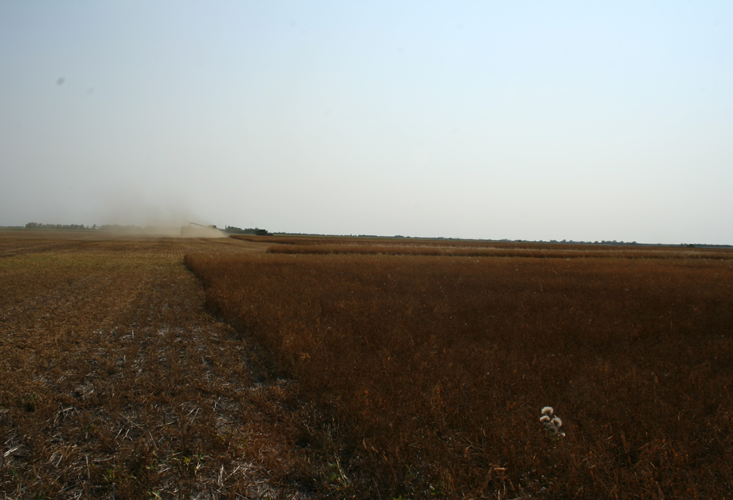Driving down a grid road in central Saskatchewan, a machine that looks like a giant insect approaches me in a cloud of dust. The cab, hanging 8 feet above the road, is suspended by tires at least 6 feet tall, with wing-like appendages folded along each side. Should I drive around it or under it?
It is harvest season, and the high-clearance sprayer is on its way to desiccate a field. Desiccation may be the most widespread farming practice you’ve never heard of. Farmers desiccate by applying herbicide to their crops; this kills all the plants at the same time, making them uniformly dry and easier to cut. In essence, desiccation speeds up plant aging. Before desiccation, crops would have to dry out naturally at the end of the season. Today, there are examples of desiccation being applied to every type of conventional crop in Canada, the United States, and the United Kingdom.1 Chances are that most of what you ate today was harvested using a desiccant, but you’d never know.




